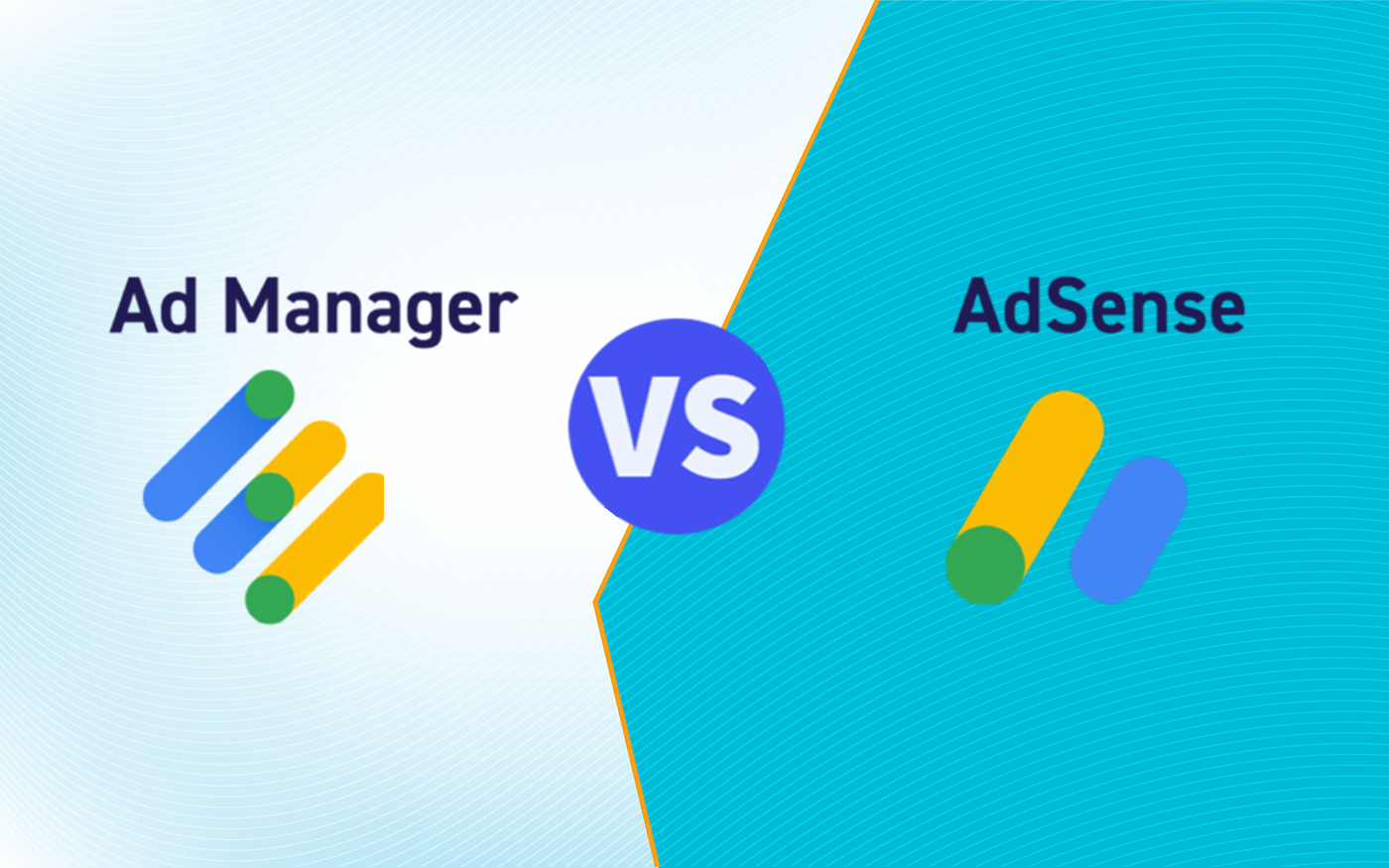The Key Differences: Google AdSense vs. Google Ad Manager
Hello Readers,
In the state of digital ad advertising, selecting the right platform to monetize your website can be a game-changer. Google AdSense and Google Ad Manager are two powerful tools in Google’s ordnance, each one is designed to cater to different needs and audiences. Whether you’re a small blogger or a large-scale publisher, understanding the distinctions between these platforms can help you make an informed decision and maximize your full revenue potential. Let’s today walk you through, what sets Google AdSense and Google Ad Manager apart, and how each can serve your unique goals and to maximize your ad revenues.
Here we start, with the basics of Google AdSense and Google Ad Manager (GAM)
The Basics: What Are Google AdSense and Google Ad Manager?
Google AdSense is a straightforward, user-friendly platform designed for individual website owners, bloggers, and small businesses. It allows publishers to display targeted ads on their websites and earn revenue from clicks or impressions. AdSense simplifies the ad monetization process, making it accessible even for those with minimal technical expertise.
Google Ad Manager (GAM formerly known as DoubleClick for Publishers) is a more sophisticated ad management platform tailored for large publishers and media companies. It provides advanced tools for managing and optimizing a wide range of ad formats, including direct sales and programmatic ads. Ad Manager also offers extensive control over ad inventory and deeper integration with various ad exchanges.
Ease of Setup and Use
Google AdSense shows its simplicity. Signing and setting up for AdSense is super easy; you only need to add a script of code to your website, and there you go. The intuitive interface requires minimal technical knowledge, making it an excellent choice for beginners. Once approved, you need to submit your site to Google for approval. As soon as your website is approved. AdSense automatically starts displaying ads that are relevant to your content and audience, eliminating the need for manual intervention.
Meanwhile, Google Ad Manager has a steeper learning curve. Setting up an account requires a thorough understanding of ad operations and inventory management. The platform’s complexity can be daunting for beginners, but it’s a powerhouse for those who need granular control over their ad strategy. Ad Manager enables publishers to manage direct deals, private auctions, and programmatic advertising all from a single interface.
Controls and Flexibility
When it comes to flexibility, Google Ad Manager takes the lead. It offers unparalleled control over the ad placements, formats, and targeting options. Publishers their self can create custom ad units, set floor prices, and implement complex ad serving rules. By the way, this level of customization is essential for large websites with diverse content and high traffic volumes. Ad Manager also supports advanced targeting, allowing publishers to reach specific audience segments based on demographics, Behavior, and other criteria.
Whereas Google AdSense offers limited customization. Publishers can choose from a variety of ad formats and sizes, but the control over ad placements and targeting is comparatively basic. AdSense is designed to be a hands-off solution, automating most aspects of ad delivery to save time and effort for a publisher.
Revenue Potential and Structures
Google AdSense uses the combination of CPC (Cost Per Click) and CPM (Cost Per Mille) pricing models. While it provides a reliable source of income for small to medium-sized websites or publishers, the revenue potential is normally lower compared to Ad Manager. AdSense’s automated nature means that publishers have less influence over the types of ads displayed and the revenue they generate from their ad inventories.
Google Ad Manager can significantly enhance revenue potential, particularly for large and mid-scale publishers. This platform supports a unified auction system, where multiple demand sources bid for ad inventory in real-time. This competitive bidding process often results in higher CPMs and ad revenues. Additionally, Ad Manager allows publishers to sell their ad inventories directly to advertisers at premium rates, further boosting revenue. The ability to manage programmatic and direct sales in alliance ensures that no ad impression is wasted.
Reporting and Analytics System
Understanding your ad performance is the key for optimizing ad revenues, and this is where the differences between AdSense and Ad Manager become noticeable.
Google AdSense offers the basic reporting tools that provide insights into ad earnings, ad performance, and user engagement etc. While these reports are sufficient for the small-scale publishers, they lack the depth needed for detailed analysis and strategic planning to further scare and optimize your ad revenues.
Google Ad Manager, on the other hand, excels in reporting and analytics. It provides comprehensive data on each and every aspect of ad performance, from, ad requests, impressions, clicks, revenue and fill rates. Publishers also can create custom reports, track key performance indicators (KPIs), and analyse data at a granular level whenever they want. This wealth of information enables informed decision-making and strategic optimizations that can drive higher revenues to them.
Resources and Support
Though both platforms offer a range of support options, yet the level of assistance varies.
Google AdSense provides extensive online resources, including a help center, community forums, and tutorials to get help. These resources are designed to assist publishers in setting up and optimizing their accounts. However, direct support from Google is limited to AdSense, this is primarily reserved for publishers with substantial traffic.
Google Ad Manager users benefit from more robust support options. Given the platform’s complexity, Google offers dedicated account managers and premium support services for larger and mid-scale publishers. This personalized assistance can be invaluable for navigating the intricacies of ad management and maximizing revenue. Publishers can be assisted over, Chats, Emails and Phone calls 24×7 by the Google experts in their parent companies.
Integration with Other Platforms
Integration capabilities are another critical factor to consider. Google AdSense integrates seamlessly with Google Analytics, allowing publishers to track ad performance alongside other website metrics. This integration provides a holistic view of their site performance and user Behavior.
Google Ad Manager offers even broader integration possibilities. It can connect with various ad exchanges, demand-side platforms (DSPs), and third-party data providers. This interface is essential for publishers looking to implement sophisticated programmatic strategies and maximize their ad revenues through multiple demand sources.
Suitability for Different Types of Publishers
Google AdSense is ideal for:
– Individual bloggers and small website owners.
– Publishers with limited technical expertise.
– Websites with moderate traffic looking for a simple, automated ad solution.
Google Ad Manager is best suited for:
– Large publishers and media companies with high traffic volumes.
– Publishers who sell inventory directly to advertisers.
– Websites requiring advanced ad management and targeting capabilities.
 UAE
UAE
 IND
IND
 ZA
ZA
 ID
ID
 USA
USA

